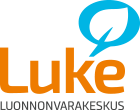The food produced in Finland is clean
Food farmed in Finland contains very small quantities of pesticide residues compared to that of many other European countries. The quality of food is ensured by taking samples of foodstuffs. These samples are taken in accordance with both the EU’s common and Finland’s own sampling plan.
In the EU, a collective agreement is reached on which foodstuffs and how many samples each country analyses each year, and which compounds are tested for in the analysis of samples. This provides comparable information on the residues of pesticides in food within the EU.
Since EU Member States and their food sectors differ from each other, each country has its own monitoring plan in addition to the common plan. National plans can take better account of foods that are important in terms of the country’s national market. Comparison of this information between countries is impossible because of the variation in control practices, such as sampling volumes or the compounds analysed.
In Finland, most control measures are targeted at imported foods. Every year, approximately 1,500 samples are taken from imported products. Decisions on the food samples to be analysed are taken on the basis of the results from previous years’ monitoring and any problems encountered in other countries. Customs controls imported products of plant origin.
Every year, approximately 150 samples are taken from food of domestic origin. Samples are mainly taken from the foods whose consumption is highest in Finland. Domestic food is monitored by the local food safety authorities, the Centres for Economic Development, Transport and the Environment (ELY Centres) and the Finnish Food Safety Authority Evira.
The low amounts of residues in Finnish food is indicative of the responsible use of pesticides in Finland. The users of plant protection products (i.e. certain pesticides) demonstrate their skills by obtaining a qualification and, where appropriate, completing a training course. In addition, safe usage practices are ensured through the supervision of some two thousand users of plant protection products each year. Practical inspections are carried out by inspectors from ELY Centres (Centres for Economic Development, Transport and the Environment) in accordance with the guidelines issued by the Finnish Safety and Chemicals Agency and the Agency for Rural Affairs.
The picture shows samples taken from plant based foodstuffs in different countries. The orange bar represents the number of compliant samples, while the blue bar illustrates samples in which residues above the maximum permissible content have been detected (MRL).[1]
Proportion of samples which contained one or more pesticide residues in concentrations below or equal to the legally permitted maximum residue levels (MRLs), %.
Database table
MRL exceedance and residue quantification rates by country of origin (EU and EEA/EFTA countries)
References
[1] EFSA (European Food Safety Authority), 2019. Scientific report on the 2017 European Union report on pesticide residues in food. EFSA Journal 2019;17(6):5743, 152 pp. Link to the publication
[2] Clean food is a multifaceted concept that, in addition to pesticide residues, involves contaminants, heavy metals, radiation, microbes, and the purity of water and soil used in production.
Photo in upper edge: Pixabay
